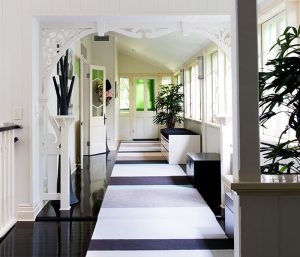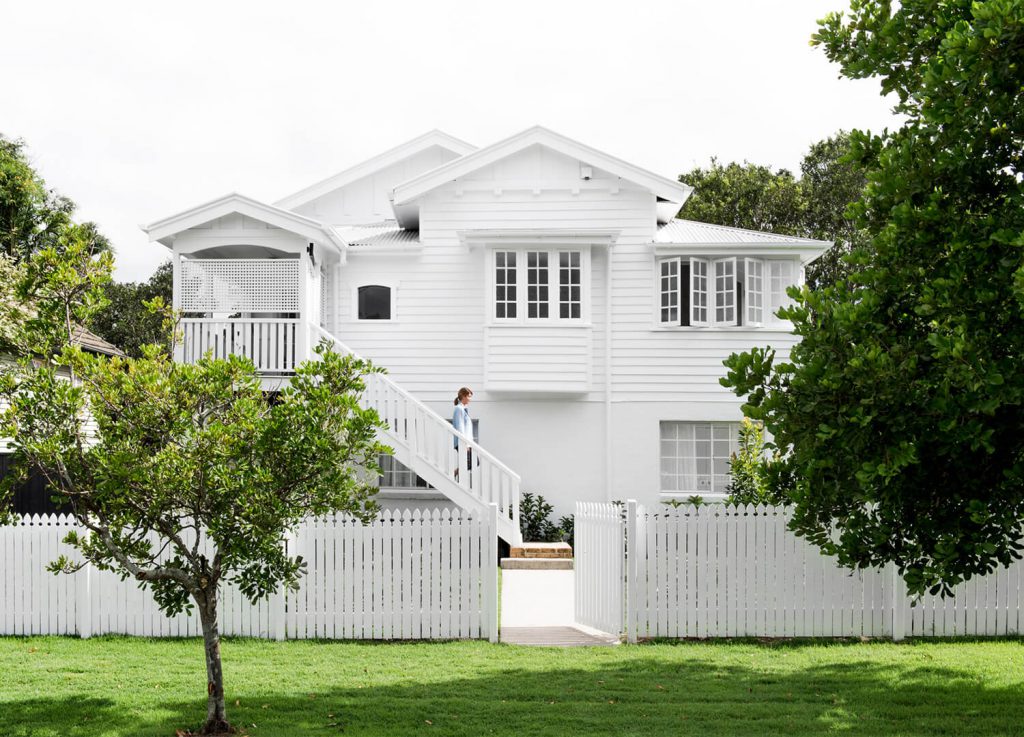Embarking on a Queenslander renovation has many challenges, but if you do your homework and enlist the help of the right professionals, the pay-off can be huge.
Queenslander homes are one of Australia’s most beloved and iconic housing styles. There are many buyers willing to pay a premium for a thoughtfully renovated Queenslander, and as a result, they are fetching premium values when re-sold.
If you are up for the challenge of tackling an old house renovation, you can create a unique home that honours its heritage, oozes charm, and provides all the comforts of a modern lifestyle.
A step-by-step guide to a Queenslander renovation
Get permits
Before you begin your Queenslander renovation plans, it is advised that you call a local town planner to check the relevant restrictions in place in your area. If your house is registered under any character or heritage registers, you may need to organise permits from the council to allow renovations to begin.
Asbestos check
It is essential to do a comprehensive asbestos check before starting your renovation. Asbestos is a harmful material that was used throughout the building of homes in Australia up until the 1980s. It must be removed by a professional asbestos specialist with an ‘A’ class removal license.
Gather the team
Embarking on an old house renovation is a complex project. For this reason, it is key to surround yourself with the right professionals for this type of job.
There are many architects and builders that specialise in Queenslander renovations and they can advise you on how to best improve and enhance your home’s unique features.
Put together a budget
Setting a realistic budget is key for a successful renovation project. You can read our article on the average renovation costs to get started.
If you need to arrange finance to fund your renovation we can help connect you with a mortgage expert free of charge. All you need to do is provide us with some details online in 3 easy steps.
Plan indoor-outdoor flow
One of the characteristics of the Queenslander is that it is elevated. The historical reason behind this design was to keep occupants safe in the event of a flash flood. It was also used as a means for cooling the home by drawing up cold air.
When it comes to creating indoor-outdoor flow, having an elevated structure means that you need stairs to get outside.
A good way to get around this issue is to utilise the dead space under the house by creating a multi-level dwelling. Consider locating a new kitchen, dining, or living area on the lower floor that opens out onto a backyard.
Consider heating and insulation
The Queenslander home was designed for tropical climates, but they can be found all over Australia.
If your property is in the Southern parts of the country where the temperatures get cooler, you should carefully consider the steps you’ll take to make your home comfortable over winter.
A key step is to insulate the structure properly and seal all possible leaks. This will not only help you keep the cold air from the outside getting into your home, but also to avoid the warm air from your heater escaping.
You can even consider having an accredited home energy auditor to do an overall assessment.
Plan to enhance period features

Each Queenslander has its unique design qualities. It could be a stained glass window, decorative timberwork or art deco door handles.
Do an audit of the historical features in your home and think of the best way to include them or even enhance them as part of your design. These historical details make a Queenslander special and should not be lost when renovating.
Think about lighting
Many Queenslanders have wide floor plans with rooms stacked side by side. This layout leaves the interior rooms very dark. On top of that, the low veranda roof restricts most of the sunlight coming in from the windows.
You should work with your architect to plan how to strategically place new windows and skylights to maximise natural light. Structural work will increase your renovation costs significantly, but opening up the layout by removing internal walls will also improve light flow.
Fixing the orientation
Poor orientation is a common problem of many Queenslanders, contributing to them being cold and dark.
The original indoor layout ignored the passage of sunlight inside the house.
The best way to fix this is to plan a whole floor plan reshuffle. Consider how the sun hits your home at different times of the year, and then assign the best position for every room in the house.
Make the most of verandas
One of the best features of a Queenslander are the decks and verandas, which were normally found both at the front and back of the home.
By enclosing some of the verandas you can improve indoor/outdoor flow and create an ideal space for year-round entertaining. Consider adding louvers and shutters to give you greater control over the elements.
Increase storage
Queenslanders have limited storage, with bedrooms not designed with built-in wardrobes. Ask your architect to help you create more storage space not only in the bedrooms, but throughout the house.
Plan your kitche
Most of the times a Queenslander will benefit from a total kitchen revamp. Modernising your kitchen will immediately improve the functionality and liveability of the home.
Plan your bathroom space
You can consider keeping some of the historical features in the bathroom (such as standing tubs or tapware) and mix them with modern elements to create a comfortable and sleek bathroom with a vintage feel.
Many Queenslander homes have only a single bathroom, but you should consider adding an ensuite to improve liveability.
Eliminating the septic tank
Many Queenslanders still have their septic tanks at the back. You should consider connecting to your council’s waste services to free up space outdoors.
10 tips for a Queenslander renovation
- If you haven’t yet bought your Queenslander, ensure you get a thorough building inspection done before purchasing. This is a key step to take before any purchase, but it is even more pressing when buying an old home.
- If possible, it is recommended that you live in the home for some time before renovating. Getting a feel of how you live in the house will help you make the most of the space.
- You should consider keeping the external shell of the property but thoroughly refurbish the interior, including moving rooms around and removing internal walls.
- Look for design inspiration. Create a visual board to collect ideas that catch your attention.
- Plan a colour scheme to enhance the romantic vibe of Queenslanders.
- Always have a contingency budget. You just never know what surprises are hiding in a Queenslander as you start tearing down walls.
- Put together a plan but be flexible. Be prepared for things to not always go according to plan.
- Allow more time. Renovations normally take longer to expected, and this is often more likely with old home renovations.
- Consider re-roofing and re-cladding the exterior to bring it up to date with modern, more durable and eco-friendly materials.
- Have fun. You are in a position to create something unique. Enjoy the ride!

